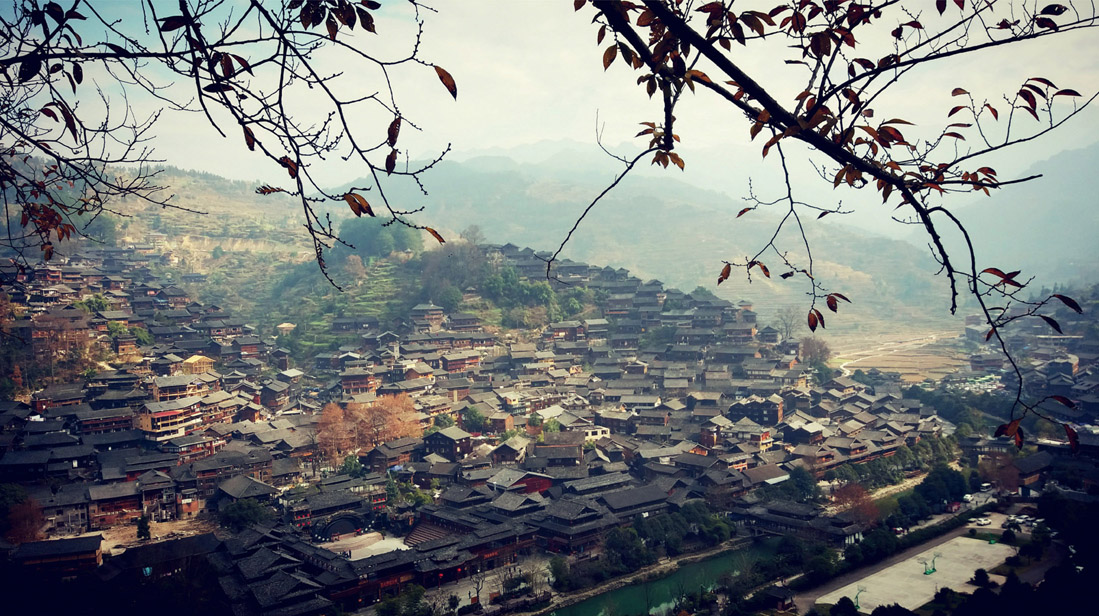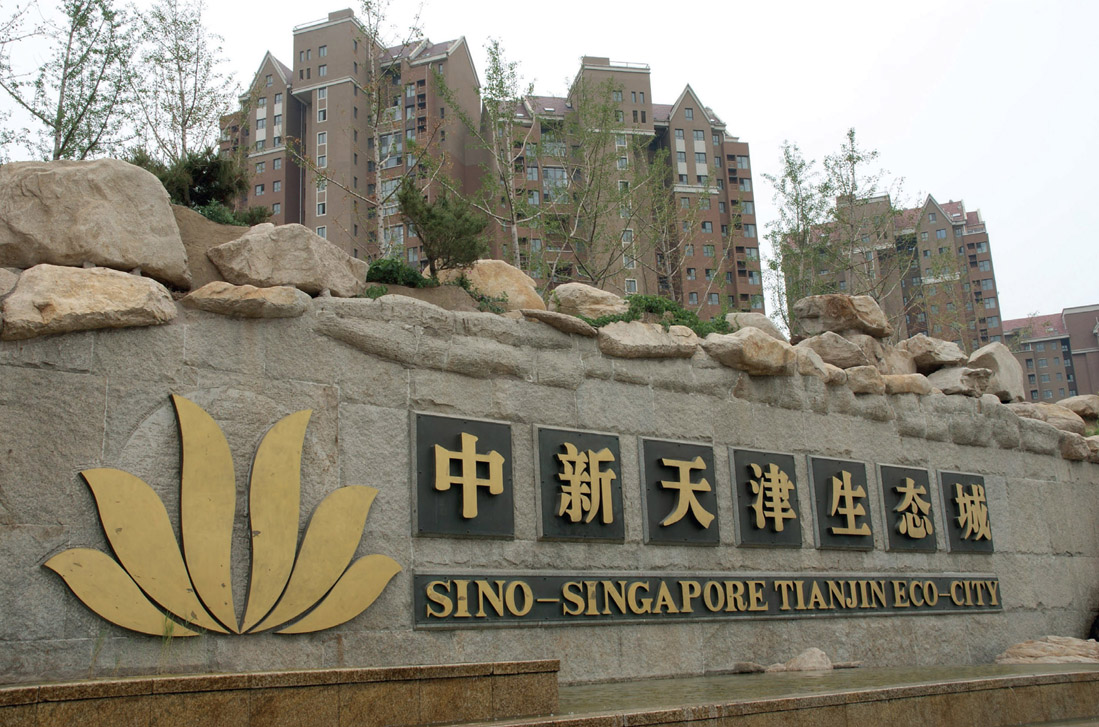5
Understanding the Environmental Agenda
The Background of Ecological Civilisation
Macro Level: A National Philosophical Mindset
In 2007, at the Seventeenth National Congress of the CPC, the CPC stated that for the foreseeable future, China’s economic model would be premised on the desire to create an ‘Ecological Civilisation’ (shengtai wenming, 生态文明). Soon after, the China Daily newspaper reported that ecological civilisation is ‘a future-oriented guiding principle based on the perception of the extremely high price we have paid for our economic miracle’.1 Put simply, the demands for an ecological civilisation, it said, were meant to herald a new epoch where social and economic development would continue but much more consideration would be given to its effects on people and the planet. China was one of the first countries in the developing world to strategically introduce sustainable development on a national and regional policy level.2 China had rewritten its Constitution back in 1982 to include the pledge to ‘protect the environment and natural resources by controlling pollution and its societal impact, ensure the sensible use of natural resources, and safeguard rare animals and plants’.3 But even though significant environmental protection policies emerged from this pledge, China’s waterways became more and more polluted,4 heavy metal adulteration of rice crops is a cause for concern in southern China5 and air quality in certain cities has become a major issue. There is a clear recognition throughout the Chinese leadership that China’s rapid economic development over the previous three decades has, in some ways, exacerbated industrial accidents. In the last 15 years, China has employed urgent remedial measures to rectify the situation. With reference to the deterioration in air quality for instance, in 2013 the Chinese State Council issued an Action Plan for the Prevention and Control of Air Pollution that aimed to reduce air pollution by over 10 per cent from 2012 to 2017.6 It may not be enough, but measures like this and many others are focusing in the right direction.
The word shengtai (生态) – ecological – originates in scientific biology but has come into more common usage over the last decade to refer to the interdependency of all things.7 Such interlinkages were spelled out by the Minister of Culture in 2007 and connected to issues of unspoiled, intangible cultural heritage. There are currently over 16 ‘eco-museums’ for the ‘protection of natural resources and the development of cultural identity’, the first of which was set up among the remote Miao villages of Guizhou. The first eco-cultural protection zone was launched by the Vice Minister of Culture, Zhou Heping, in 2007 in Fujian, claiming that it would protect ‘architecture, historical streets, and historical remains; and … oral traditions, traditional performing arts, folk customs, rituals’.8 Deputy Director of China’s State Environmental Protection Administration, Pan Yue, claims that China ‘has maintained a nation state united by roots, language and ethnicity … possible only because of the deep ecological wisdom contained within the country’s cultural ideals’.9 Even in relation to the cultural conceptualisation of ecology it often isn’t clear which cultural heritage and which traditional wisdom is being referred to, and how ‘intrinsic’ these cultural values are. The Taoists’ appreciation of nature as the source of moral understanding, for example, made sense for an ancient regime but is too impressionistic for China’s contemporary needs. Consequently, there has arisen a preference for a more Confucian understanding of nature, which gives priority to the social affairs of man.10
Actually, for many years in post-war China, the political establishment tended to see human existence standing above nature, i.e., that humans had a civilising mission to tame nature for humanity’s own purposes. In his article ‘Ecological wisdom of the ages’, Pan Yue notes that, ‘China’s adoption of the ecological agenda corrects the errors of consumerism and nihilism that western industrial civilisation has brought us’.11 In this way, the Party has begun to use the rhetoric of ecology and sustainable development to promote national renewal and socialist ecological progress.12
Micro Level: Individual Behaviour Change

Figure 5.1: Xijiang Qianhu Miao Village, National Eco-cultural Protection Zone, Guizhou Province
A second interpretation of the leadership’s desire to create an eco-civilisation relates to the targeting of individual behaviour changes to encourage people to identify with a developed mentality. Back in 2003, the CPC wanted to create a ‘well-off’ society and cited that the new middle classes would be ‘educated, cultured, civilized and creditable’.13 The proposition was that economic advancement would cultivate more civilised behaviour, and encourage social refinement and environmental circumspection, all of which would freely emerge as the middle classes attained more leisure time and becoming more cultured. The new middle-class society would be one in which, it was argued, some are allowed to get rich first – a social experiment that would generate cultural pioneers whose wealth and breeding would trickle down to those who wait. The embodiment of this new cultivated society was the concept of suzhi, 素质, referring to the civilised behaviour standards of ‘high quality people’.14 Implicit in the success of this strategy is the belief that environmental conditions are a personal responsibility borne out of a full understanding of one’s social duty.
So, we have two issues related to environmental remediation. On one hand, government clean-up campaigns; on the other, a notional environmental social contract. The former recognises the need of government and its representatives to ditch the rapacious. The latter points to the individual’s and community’s personal and social responsibilities to uplift themselves to a social standard of behaviour befitting a modern developed economy.
The Development of Chinese Eco-cities
The Definition of the Eco-city
A study by the People’s Bank of China and the United Nations Environment Programme found that achieving the national targets for environmental clean-up, cutting emissions, investing in energy efficiency, and clean transportation will require an annual investment of at least CNY2 trillion (US$320 billion, or more than 3 per cent of GDP) for the next five years.15 This is an unimaginably large investment – 20 times NASA’s annual budget. As part of this process, President Xi co-drafted a declaration of environmental clean energy co-signed by President Obama to indicate the political seriousness with which China treats the environment.16 Furthermore, a consortium comprising the People’s Bank of China, the China Banking Regulatory Commission, the China Securities Regulatory Commission, and the China Insurance Regulatory Commission is being set up internally to ‘work together with the government agencies to formulate financial policies that support the development of environmental service industry’.15 It is clear that ecology, environmental clean-up, and energy-saving are at the heart of China’s development strategy and have been for some time.
Eco-cities will play a significant role. As early as 1995, the regulatory environmental agencies issued guidelines for proposed demonstration of eco-communities and environmental protection model cities under its Eco-Construction Programme. Subsequently, low-carbon eco-cities have been officially put forward as the answer to the PRC’s urban development and environmental problems. Eco-cities cannot be built overnight: they require substantial technology (not just main infrastructure) and are often built on heavily remediated land away from existing centres.
The International Ecocity Frameworks and Standards (IEFS) has developed a global ‘working definition’ of an eco-city, coordinated through the United Nations’ offices. The foundational group behind this initiative is Eco-city Builders founded by Richard Register – who reputedly first coined the term eco-city. The advisory body definition states that an eco-city is a human settlement that ‘provides healthy abundance to its inhabitants without consuming more (renewable) resources than it produces, without producing more waste than it can assimilate, and without being toxic to itself or neighboring ecosystems’.17 Many definitions exist and as a consequence Professor van Dijk authored a book called Using 100 Criteria for the Classification of Ecological Cities. Many definitions exist and Professor van Dijk states that, in practice, ‘many cities claim to be ecological cities but there are no non-ambiguous definitions’.18 There are, however, a huge array of measurement practices, each vying to be adopted as the benchmark. We will look at these later. In China, there are at least 40 presumed synonyms for eco-city such as green city, ecological city, liveable city, low-carbon city, and so on.
The Practices of Eco-cities
Around 200 significant eco-city projects have been proposed, are under construction, or have been partly or fully implemented across China.19 According to the statistical data of the Chinese Urban Science Institute in 2011, which includes smaller-scale projects, there are 295 cities under so-called urban ecological construction.20 This latter figure includes around 80 per cent prefecture-level cities (230), with 46 per cent (133) aiming to be specifically low-carbon cities.
Ren Xuefei, author of Urban China, notes that ‘Eco-cities are intended to serve as role models for sustainable urban living in the future by experimenting with cutting edge technologies’.21 Role models is a good way of characterising the eco-city phenomenon and on that basis, the idea is laudable: China is building places for people to live, work, and enjoy. They are doing so purposively, slowly, but they are building experimental urban centres to cater for the next influx of city aspirants. These are also places where China can try out new land-purchasing deals, liberalise planning constraints, and provide eco-inducements and lucrative commercial deals to foreign investors.
The University of Westminster has documented the various comparisons in urban sustainability frameworks often related to eco-city status, examining the different criteria demanded by a large number of major global authorities.22 Table 5.1 shows a number of the criteria that Tianjin eco-city has to be assessed against. These framework rules and standards are set by the following site, local, provincial, state, and international indexing systems in order to qualify for Eco status.
Table 5.1: Comparisons in Urban Sustainabihty Frameworks
| Name | Number of Indicators | ‘In Eorce’ Date | Regulator | Notes |
| Eco-city Development Index System | 2011 | 28 | Chinese Society for Urban Studies | Proposed national indicator framework, organised along five categories and 28 indicators Specific targets for the majority of indicators, with eight indicators defined more flexibly in terms of ‘innovative approaches’ and building on 2011 |
| Tianjin Bmhai Eco-city | 2010 | 26 | Singapore and Chinese Governments | Key Performance Indicators with focus on resource efficiency Incorporates Smo-Smgaporean national standards and builds on earlier national frameworks |
| National Eco-garden City | 2010 | 19 | China Ministry of Housing and Urban-Rural Development (MoHURD) | This is a national framework that comprises 19 indicators divided into three categories natural environment, living environment, and infrastructure Cities have to apply for renewal of ‘National Eco-garden City’ status every three years |
| National Eco-county, Eco-city and Eco-provmce Indicators | 2007 | 22 | China Ministry of Environmental Protection | Eramework of 22 indicators to assess cities’ performance against standards The indicators are divided into three categories environment, economy, society |
The information in Table 5.1 has been gleaned from University of Westminster research.23 This provides a glimpse of the huge amount of paperwork, monitoring, consultancy, and reporting – in other words, human time – spent accounting for this urban project.
Some areas are not weighed down in technical indices or are not designed to deal with people as residents. The Yangcheng Lake Renewal Project to the north of Suzhou, for instance, is a fine example of urban planning without the incursion of too many tick-box requirements. Vast areas of farmland and wetland have been upgraded to protect natural habitat, create a sensitive tourist playground and provide sanctioned fishing and recreational uses. It is a safe, secure, unpolluted, visual treat that is also, coincidentally, environmentally sensitive. But it is not a city. For that, you need people, transport, commerce, industry, a busy atmosphere, and a dynamic that introduces a je ne sais quoi into the equation.

Figure 5.2: Sino-Singapore Tianjin Eco-city
In an eco-city, developers can experiment architecturally, universities can test new energy-saving designs and products; the government can develop cutting-edge testing processes to originate regulatory frameworks, and so on. In 2003, China’s Ministry of Environmental Protection (MEP) initiated a programme to establish eco-counties, eco-cities, and eco-regions nationwide. Since getting that official sanction to proceed, the number of demonstration eco-projects has increased rapidly.24 Up until July 2012, 97.6 per cent of prefecture-level cities and 80 per cent of county-level cities have proposed the goal of building an eco-city.25 All the cities explored in this book’s other chapters – Shanghai, Qingdao, Hangzhou, Hefei, Chengdu, and Nanchang – lay claim to some level of eco-development within their boundaries. All, to some extent, are trying something new in order to learn valuable lessons about quality, humane environments. The experiment is something akin to an urban-scale version of the British Research Establishment (BRE), set up in the aftermath of the Second World War in the UK, to investigate the performance of various building materials and construction methods suitable for that fervid period of rapid house-building and urban reconstruction that was urgently needed after the devastation of the war. China is experiencing its own version of innovation and there is a similar need for efficiency frameworks, social improvements, infrastructure expansion, and urban experimentation. Chinese eco-cities are trying to differentiate themselves from the west, not least by the fact that they are building new cities and that they are well planned, financially backed, and prioritise the user – the resident, occupier, city dweller. In contract, the west regularly focuses on people as a problem (as James Lovelock says, ‘the root cause is too many people … Just the breathing those billions of people do … is a potent source of carbon dioxide’).26 Premier Li Keqiang stated in March 2013 that the new model of urbanisation should be human-centred and should ensure the prosperity of the people.27

Figure 5.3: Yangcheng Lake, Suzhou
